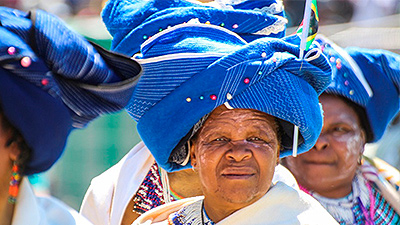A person’s heritage is said to be made up of the practices and traditions that are passed-on from generation to generation.
As South Africa commemorates Heritage Day on September 24, the National Heritage Council describes Heritage Day as a day in which all South Africans are encouraged to celebrate their cultural traditions in the wider context of the great diversity of cultures, beliefs and traditions that make up our nation.
It is in such diversity that our country finds itself blessed in other diverse beauty, in the form of heritage sites. At last count, South Africa had eight World Heritage Sites. And of the eight, four are cultural, three natural and one mixed (cultural and natural).
A country’s natural heritage comprises its beautiful environment and natural resources like gold and water. Areas that are very special and where animals or plants are in danger of extinction are declared World Heritage sites. Such areas are respected and protected against harm.
SA’s World Heritage Sites:
Robben Island (Western Cape)
Cape Floral Region (Western Cape)
Richtersveld Cultural and Botanical Landscape (Northern Cape)
Vredefort Dome (Free State)
Cradle of Humankind (Gauteng)
Mapungubwe National Park (Limpopo)
iSimangaliso Wetland Park (KZN)
uKhahlamba Drakensberg Park (KZN)
As part of our commemoration for Heritage Day 2014, we take a look at the country’s World Heritage Sites.
Robben Island: (Western Cape)
It is popularly known for being a place where former President and the late Nelson Mandela spent 18 of his 27 years of incarceration.
It was used, for nearly 400 years, as a place of exile where apartheid rulers sent those they regarded as outcasts and troublemakers.
The island was also used, at various times, between the 17th and 20th centuries as a prison, a hospital for socially unacceptable groups as well as a military base.
Since 1997 Robben Island has been a museum, acting as a focal point of South African heritage.
Cape Floral Region: (Western Cape)
The Region is one of the richest areas for plants in the world, it is also home to nearly 20% of the continent’s flora.
The site displays outstanding ecological and biological processes associated with the Fynbos vegetation, unique to the Region. Its outstanding diversity, density and endemism of the flora are among the highest worldwide.
The Cape Floral Region is considered of outstanding universal value for representing ongoing ecological and biological processes associated with the evolution of the unique Fynbos biome. These processes are represented generally within the Cape Floral Region and captured in the Region’s eight protected areas.
The Region is one of the richest areas for plants than for any similar-sized area in the world.
Richtersveld Cultural and Botanical Landscape (Northern Cape)
The Richtersveld Cultural and Botanical Landscape was in June 2007 named the UNESCO World Heritage Site.
It constitutes a cultural landscape communally-owned and managed.
The heritage site sustains the semi-nomadic pastoral livelihood of the Nama people, reflecting seasonal patterns that may have persisted for as much as two millennia in southern Africa.
It represents a harsh landscape where water is a great scarcity and only the hardiest of life forms survive. It is also characterised by extreme temperatures.
Despite its harsh conditions, the Richtersveld is regarded as the only Arid Biodiversity Hotspot on Earth, with an astonishing variety of plant, bird and animal life (much of which is endemic).
Source: SA Places
– By Compiled and Edited by Tshepo Tsheole


